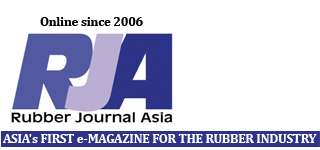German chemical firm Lanxess has commissioned a new wastewater treatment plant at its Belgium Kallo/Antwerp site. The special chemicals company invested around EUR12 million in the plant, which has a treatment capacity of around 260,000 litres of wastewater per hour.
Lanxess adds it thoroughly modernised and expanded the existing water treatment plant to comply with the stricter environmental legislation. It was a challenging job because the plant had to remain operational throughout the renovation. The wastewater treatment plant not only processes the wastewater from the Lanxess plants on the site, for the production rubber chemicals and glass fibre, but also that from two neighbouring companies.
The installation is home to bacteria that process and purify the wastewater. The different wastewater streams are mixed and end up in aeration towers. The water is fed with activated sludge, in which the bacteria reside. The environment of the biological wastewater treatment plant is constantly monitored, for example to ensure balanced acidity and the right temperature.
The bacteria are finally separated and returned to the purification process, the purified water is fed into the Scheldt. The plant operates day and night. An independent laboratory analyses water samples daily for quality control.
“The renewal and improvement of the wastewater treatment plant enables us to meet the highest environmental standards. We take responsibility for our local sites and this includes investing in sustainable and innovative processes that protect the environment,” said Anno Borkowsky, board member of Lanxess.
“Using energy, raw materials and water sparingly and efficiently is in the DNA of the chemical sector. As the largest chemical cluster in Europe, it is our responsibility to also be an innovation leader in cutting-edge environmental and climate technology. With this investment, Lanxess is putting its money where its mouth is in challenging economic conditions. It illustrates the chemical sector’s ongoing commitment to a better environment and additional water savings. Compared to 10 years ago, chemical and pharmaceutical companies already consume almost a quarter less drinking water. Together with Flemish minister Zuhal Demir, we are working on a sectoral Blue Deal to save even more water,” said Yves Verschueren, managing director of essenscia, the Belgian sector federation of the chemical industry and life sciences.
“Today, the precipitation deficit in Flanders is greater than during the historically dry summer of 1976. Water managers, water companies, governments, citizens and companies are taking measures to mitigate the effects of the current drought period, but it is clear that we need to arm ourselves in a sustainable way against periods of drought. This investment by Lanxess demonstrates a social commitment to daring and willingness to invest in such measures in economically challenging times, in order to make their company, but also the sector, future-proof,” said Carina Van Cauter, Governor of the province of East Flanders.
The project is part of an investment program in the mid double-digit million euro range with which Lanxess says it has significantly improved environmental standards at its sites in the port of Antwerp in recent years. At the Lillo site, it commissioned a plant to reduce nitrous oxide emissions in 2021. This will reduce the emission of CO2 equivalents by 150,000 tonnes/year. In the autumn 2022, construction will start on a second plant that will eliminate another 300,000 tonnes/year of CO2 equivalent.

